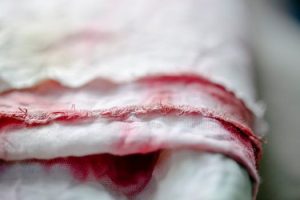Neurotechnology Enables Emotional Response-Driven Fashion Design
Fashion has always been considered a form of self-expression and a reflection of one’s personality and emotions. From vibrant and bold designs to minimalistic and monochromatic styles, fashion has the power to convey a range of emotions and make a statement without uttering a single word. However, with the advent of technology, the fashion industry has taken a revolutionary turn, giving rise to neurotechnology-enabled emotional response-driven fashion design. This innovative approach to fashion design utilizes neuroscience to create garments that not only look appealing but also evoke specific emotional responses in the wearer.
The Power of Neuroscience in Fashion Design
Neuroscience, the scientific study of the nervous system and the brain, has been an essential tool in understanding human behavior and emotions. This interdisciplinary field has now found its way into the fashion industry, enabling designers to tap into the emotional side of their audience and create garments that enhance their experience. By studying the brain’s response to different visual and sensory stimuli, neuroscientists and fashion designers have joined forces to create a powerful combination of science and art.
The Role of Emotional Responses in Fashion Design
Emotional responses play a crucial role in how individuals perceive and interact with fashion. Every color, pattern, and texture has a unique impact on our emotions, which influences our clothing choices. When we wear clothes that make us feel confident and comfortable, our brain responds positively, improving our mood and overall well-being. Moreover, the emotions evoked by clothing can also have a significant impact on how others perceive us.
Understanding the Science behind Emotional Responses
Through neuroscience, fashion designers are now able to understand the science behind emotional responses and use it to their advantage. Studies have shown that different regions of the brain are activated when we see certain colors or patterns. For instance, the color red is associated with passion and energy, while blue is linked to calmness and tranquility. By incorporating these colors in their designs, designers can create garments that evoke these specific emotions in the wearer.
The Evolution of Emotionally Responsive Fashion
Emotionally responsive fashion has come a long way since its inception. Initially, designers relied on traditional market research and focus groups to understand consumer behavior. However, these methods were limited in their effectiveness as they relied solely on verbal responses. With the help of neurotechnology, fashion designers can now access a more comprehensive and accurate understanding of emotional responses. Using brain imaging technology, they can measure physiological reactions to different stimuli, enabling them to create designs that cater to the audience’s subconscious desires.
The Impact on the Fashion Industry
The integration of neurotechnology in fashion design has not only enhanced the designer’s creative process but also revolutionized the entire industry. By using neuroscience, designers can now tailor their products to specific target audiences, ensuring maximum impact and customer satisfaction. Emotionally responsive fashion has also opened doors for more inclusive and adaptive designs that cater to individuals with sensory processing disorders.
Conclusion
Neurotechnology has undoubtedly brought a whole new dimension to fashion design. With its ability to tap into the emotional responses of individuals, it has transformed the traditional approach to fashion, making it more personal and meaningful. As technology continues to advance, we can only imagine the endless possibilities and the impact it will have on the fashion industry. With emotionally responsive fashion, designers have the power to not only create beautiful garments but also evoke positive emotions and enhance the overall fashion experience for their audience.











